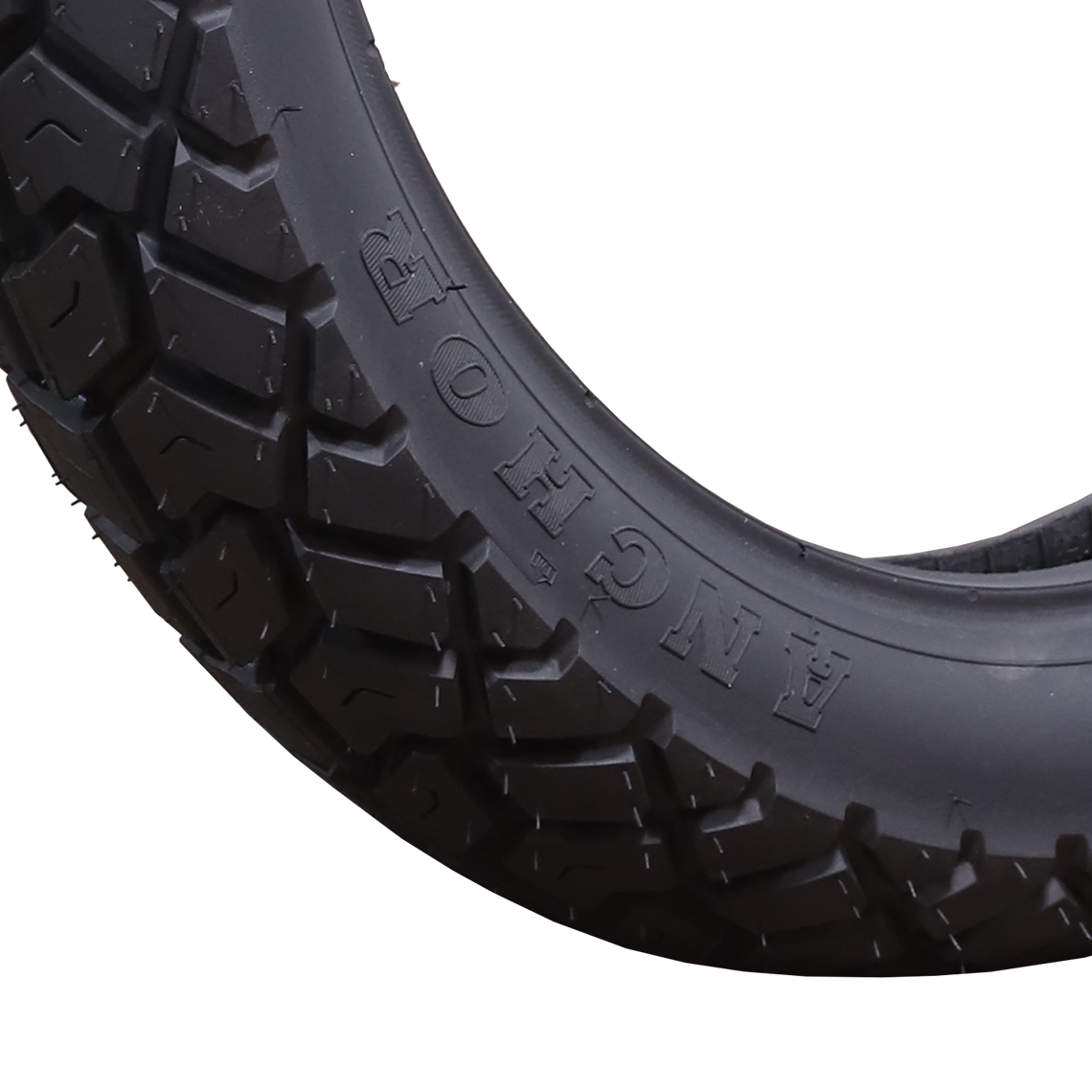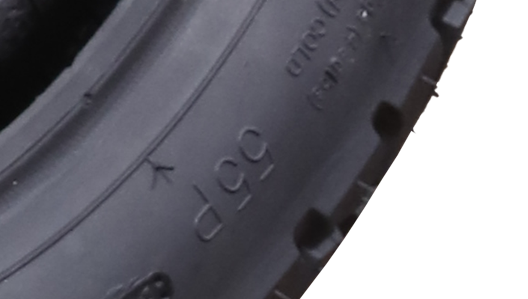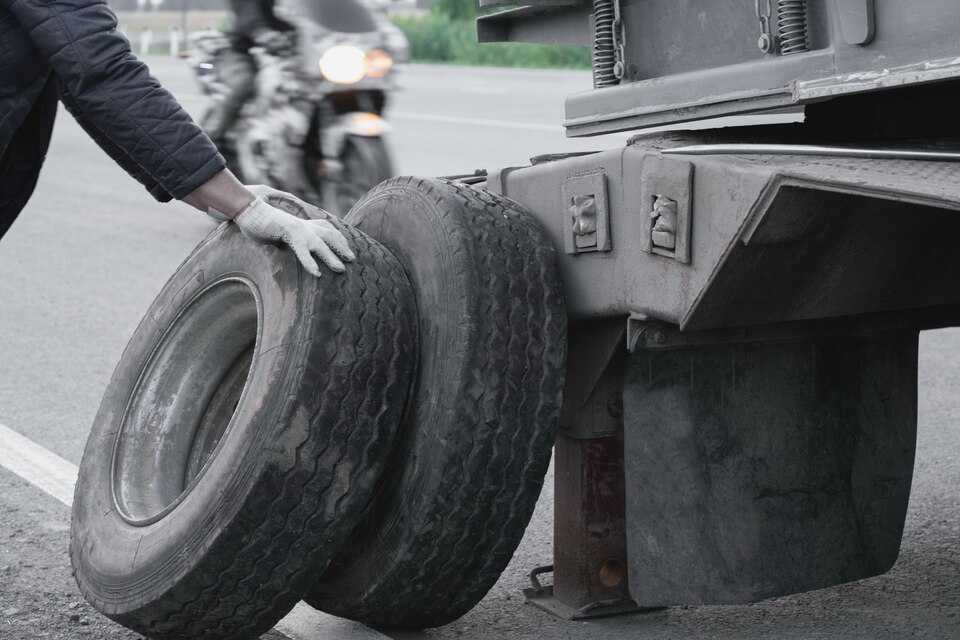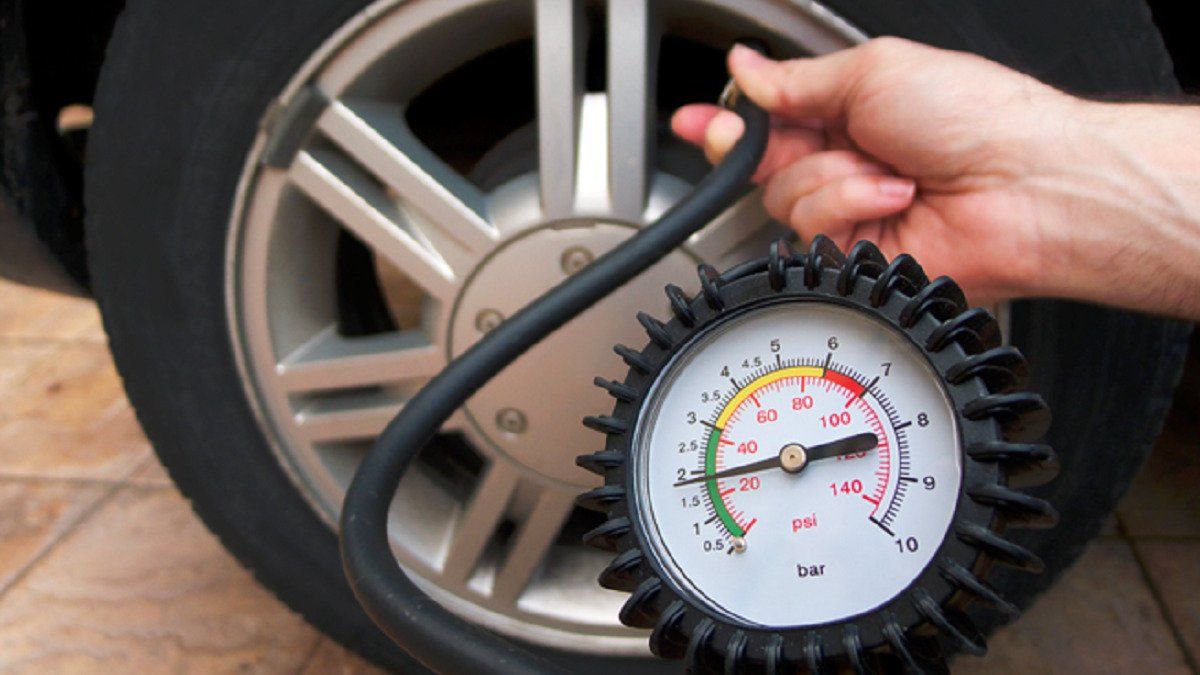

Tyre rotation is the process of moving the tyres from one position on the vehicle to another, usually from front to back or side to side. Rotating your tyres regularly helps ensure even wear and tear, which can extend their lifespan and save you money in the long run.
Wheel alignment refers to adjusting the angles of the wheels to match the specifications set by the vehicle manufacturer. The purpose of wheel alignment is to ensure that the tires make proper contact with the road and that the vehicle handles properly.
Wheel balancing refers to adjusting the weight distribution around the tire and wheel assembly. The purpose of wheel balancing is to ensure that the weight is evenly distributed, which can prevent vibrations and uneven tire wear.
Poor tire handling practices can lead to premature tire wear, decreased performance, and safety issues. Here are some tips to prevent poor tire handling practices.







Commercial Name Of The Tyre, In This Case Anchor.
in this case, 100/90-17
the width is the measurement of the tire from one sidewall to the other sidewall when the tire is mounted and inflated to its recommended pressure. Here, 100 is the width of the tyre
The aspect ratio is the height of the tire’s sidewall as a percentage of its width. Here, 90 is the aspect ratio of the tyre.
In the case of a 100/90-17 tire, the width of the tire is approximately 100 mm, and the aspect ratio is 90 percent of the tire’s width. This means that the height of the tire’s sidewall is 90 percent of its width, or approximately 90 mm.
18 indicates the diameter of the wheel rim that the tire is designed to fit on.
The load/speed index on a tyre is an alphanumeric code that indicates the maximum load-carrying capacity and the maximum speed capability of the tyre.
Load Index: The load index indicates the maximum weight that a tyre can safely carry. It is represented by a number that corresponds to a specific load capacity in kilograms or pounds. For example: in this case load index is 55, this indicates that the tyre can support a maximum load of 218kg.
Speed Index: The speed index indicates the maximum speed at which the tyre can safely operate. It is represented by a letter than corresponds to maximum speed rating in kilometres per hour or miles per hour. For example: in this case speed index is P , this indicates the tyre has a maximum speed rating of 150 km/h.
The manufacturer name on the tyre sidewall indicates the company or brand that produced the tyre. The presence of the manufacturer name helps consumers identify the source of the tyre and provides assurance of the brands reputation and quality standards.
This indicates the direction in which the tyre should rotate when mounted on the vehicle. The direction of rotation is typically represented by arrow or text will point in the specific direction in which the tyre should rotate when the vehicle is in forward motion.
Each country has their own set of testing and evaluation procedures to ensure the tyre meets country-specific criteria. In India, the ISI marking on the tyre sidewall indicates the tyre has been certified to meet the standards set by the Bureau of Indian standards (BIS) in India. The ISI marking is a symbol of quality assurance and compliance with Indian safety and standards for tyres.
This is a unique number given to each tyre manufactured along with the week and year the tyre is manufactured in. This helps the customer and manufacturer keep a tab on the tyres. The week and year is mentioned in the format _ _ , _ _.
Some answers to your frequently asked questions about our tyres and brand.
Yes, our tires are backed by a warranty against manufacturing defects. The specific terms and conditions of the warranty may vary, so please refer to the warranty information provided at the time of tyre purchase. Alternatively, you can get in touch with us via email or website.
Ideally, it is best to replace all four tyres at the same time for optimal performance and safety. However, if only one tyre is damaged or worn, it is acceptable to replace it with a tyre of the same size, type, and tread pattern as the remaining tires to maintain balanced handling characteristics.
When storing tyres, it is best to keep them in a clean, cool, and dry location away from direct sunlight, sources of heat, and ozone-generating equipment. Store them upright and stack them no more than four tyres high. It is also recommended to protect tyres from contact with oil, gasoline, or other chemicals.
Bias tires and radial tires are two different construction types used in the manufacturing of tires. Here’s the answer to the question about the difference between bias tires and radial tires:
Bias Tires:
– Bias tires have a construction in which the internal plies or cords run diagonally across the tire at an angle, typically at a 30-45 degree angle.
– The plies in bias tires crisscross each other, creating a crisscross pattern in the tire’s sidewall.
– The layers of fabric cords in bias tires are typically made of nylon or polyester materials.
– Bias tires are known for their robust construction and ability to withstand heavy loads.
– They provide good traction and are commonly used in off-road, agricultural, and industrial applications.
– Bias tires generally have a lower price point compared to radial tires.
Radial Tires:
– Radial tires have a construction where the internal plies or cords are oriented radially from the centre of the tire to the bead at a 90-degree angle.
– The radial cords are made of steel or other strong materials, providing strength and stability.
– The sidewalls of radial tires are more flexible and have a lower aspect ratio compared to bias tires.
– They provide better grip on paved surfaces and are commonly used in passenger cars and highway road application.
– Radial tires tend to have a higher price point due to their advanced construction.
The choice between bias and radial tires depends on the specific needs and requirements of the vehicle and its intended usage.
Yes, we have domestic and international authorised dealers and distributors. Please leave your requirement and details through the contact us page and we will revert back. Alternatively, you can drop us an email at braza@gmail.com .
The tire speed rating indicates the maximum speed capability of a tire, while the load index represents the maximum weight capacity of a tire. It’s essential to select tires that meet or exceed the recommended speed rating and load index specified by your vehicle manufacturer. Please read our blog for further details.

June 5, 2023

June 5, 2023